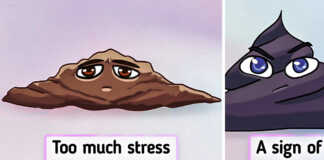Piercing is one of the oldest kinds of body modification: it was used by different nations several thousands of years ago. Despite such a long history, there are still quite a lot of misconceptions about these modifications. And this lack of knowledge may lead to some trouble and complications.
The Elite Indian decided to dispel the most popular myths so that you can enjoy the attractive piercing of different parts of the body.
1. Piercing guns are better than needles.
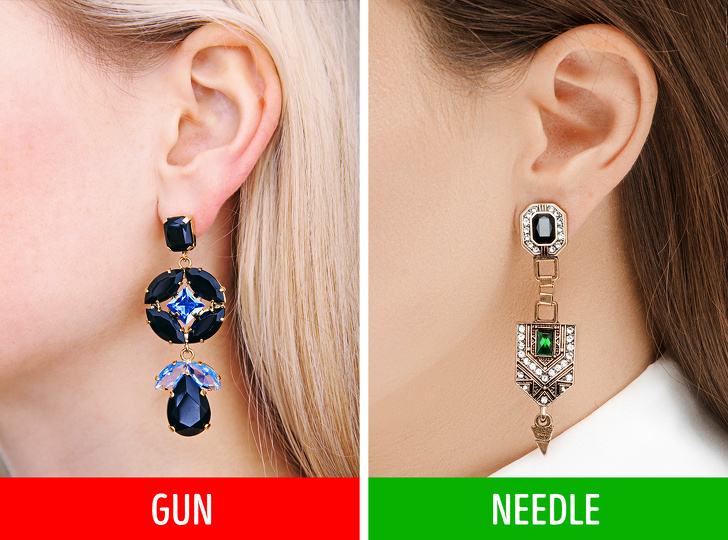
© Depositphotos
Piercing the earlobe with a gun is probably one of the most popular and most dangerous kinds of piercing. There are several reasons why:
- During piercing, blood might get on the device and the plastic gun is impossible to disassemble or put in boiling water for sterilization. So there’s a risk of getting infected with something really serious like hepatitis.
- In order to make a hole with a gun, they use a sharp earring. Unlike a special hollow needle, the earring literally tears the tissue of the earlobe. Such wounds take much longer to heal.
- When using a gun, the ear is pinched which only increases the risk of getting injured. For the same reason, it’s not all that simple to get the right hole: there’s a big change of asymmetric piercing.
2. Once you get a puncture, you need to put earrings made of gold, silver, or surgical steel in them.
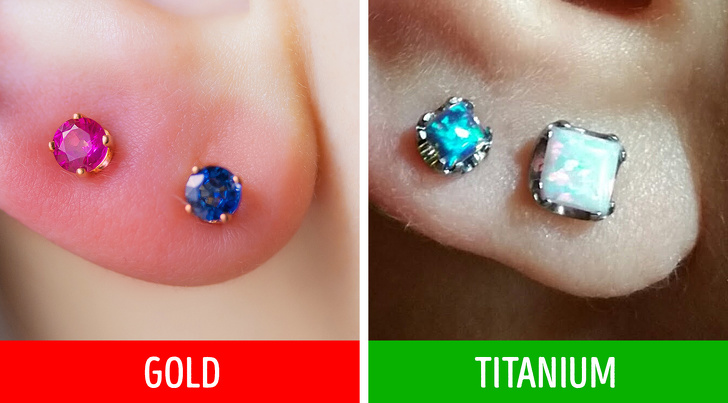
© Susurro88 / Reddit
This is another popular myth that can lead to allergic dermatitis.
- It’s hard to find gold of good quality which is why a lot of people buy cheaper kinds that might contain nickel. It’s believed to cause allergic reactions.
- Stainless steel doesn’t cause allergic reactions. This is why piercing needles are made of it. But not all stainless steel is good for wearing during the healing period. You need the kind without any additives which can be hard to find.
- For the first piercing, it’s better to choose materials that don’t come into active contact with the skin. This can be, for example, light and safe titanium (which is used in prosthetics and tooth implants).
3. Any sort of earrings can be put into a new puncture.
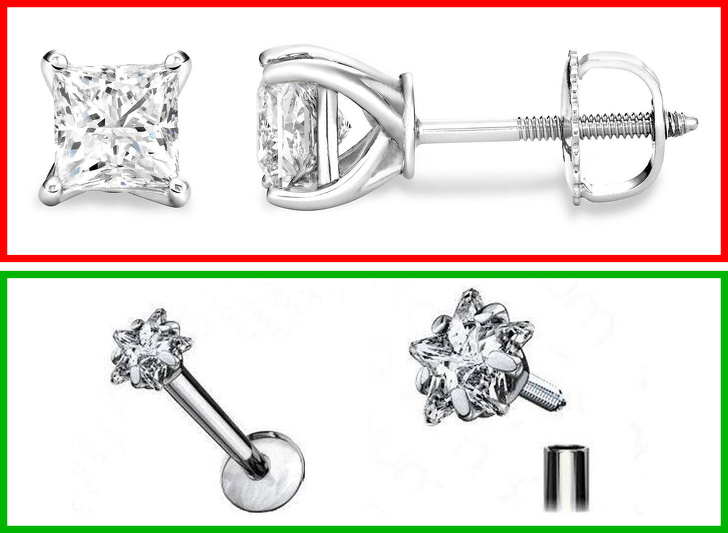
© Body Jewellery Shop (BodyJewelleryShop.com) / Facebook
In fact, most of the products from jewelry stores are not good for newly pierced skin.
- They often have outer threads that collect a lot of dirt. This may lead to an infection.
- Specialized jewelry for piercing is polished much better and the thread is inside. Such earrings are hard to put on but the hole will heal much faster. Besides, you can choose the optimal length, taking swelling (that often appears after piercing) into account.
4. Earrings have to be moved quite often.
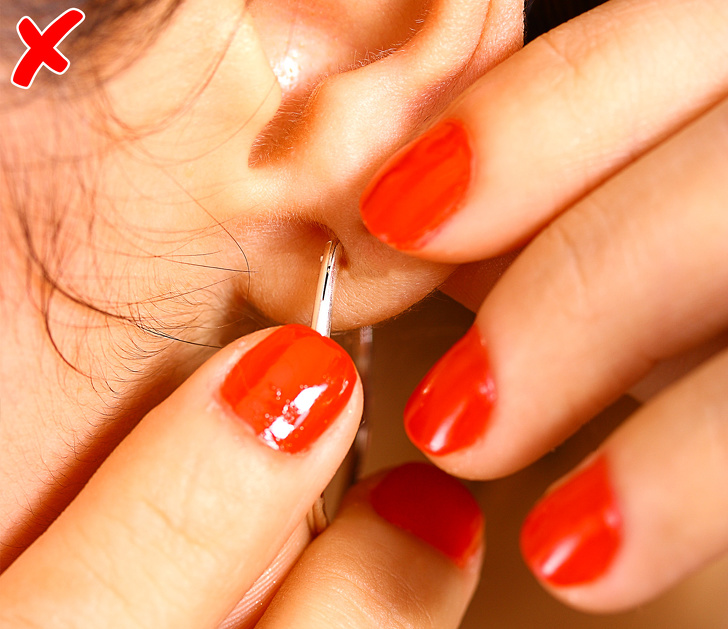
This is one of the worst pieces of advice you can give to someone who decided to get a piercing.
- Turning the earring regularly only makes the wound worse and it might take longer to heal. This is why experienced piercing experts don’t recommend using rings in noses right away: they’re more mobile than other types of jewelry.
- If you take good care of a fresh hole, you don’t need to do anything else to keep it healthy.
5. Hydrogen peroxide is your best friend.
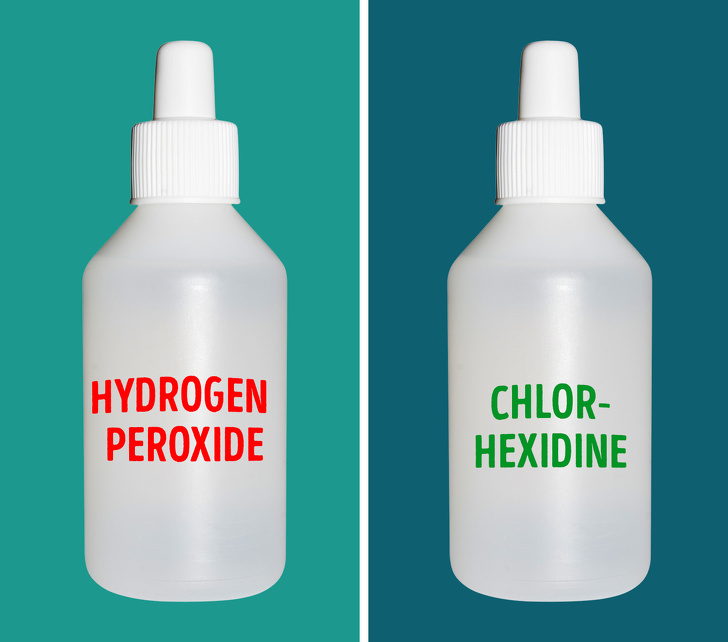
Despite its worldwide use, hydrogen peroxide is not always the best solution.
- Think about how foamy it is when it gets onto the wound. This effect makes all the dirt get outside the wound. However, scientists are still doing research in order to understand whether hydrogen peroxide destroys the cells of the connective tissue for healing. The results are not clear at this point.
- Scientists are also not quite sure about the disinfecting features of hydrogen peroxide. The World Health Organization describes only 3 antiseptics: chlorhexidine, ethanol, and povidone-iodine. Hydrogen peroxide is not on the list.
- Only chlorhexidine can be used for a new piercing. It is used by dentists so you can use it too. But you should know that your teeth might get a little yellow if you use it in your mouth but it will go away over time.
6. Saying a piercing is or isn’t painful
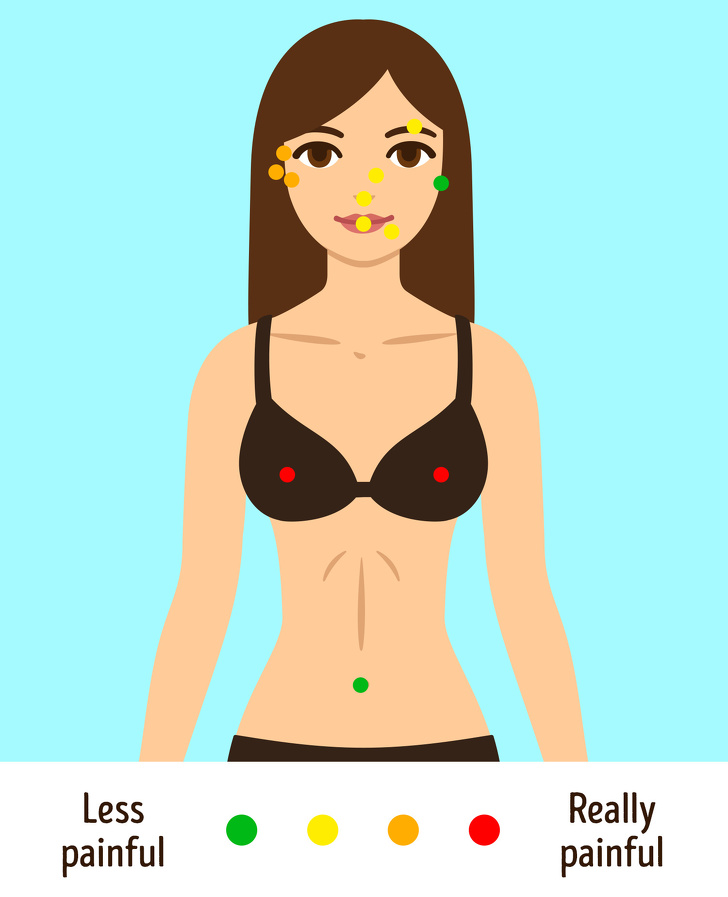
Both “painful” and “not painful” are myths. Pain is a very relative concept. However, there is a pain level chart for various piercings.
- The least painful spots are the earlobes and belly button.
- The more painful spots for piercing are the eyebrows, lips, tongue, and the nostrils.
- The next most painful area is the piercing of thick cartilage that takes a lot of work to get through which is what the entire ear, except for the lobe, is made of.
- And the most painful spot to pierce is a person’s private parts.
7. If you remove an earring, the puncture will heal right away.
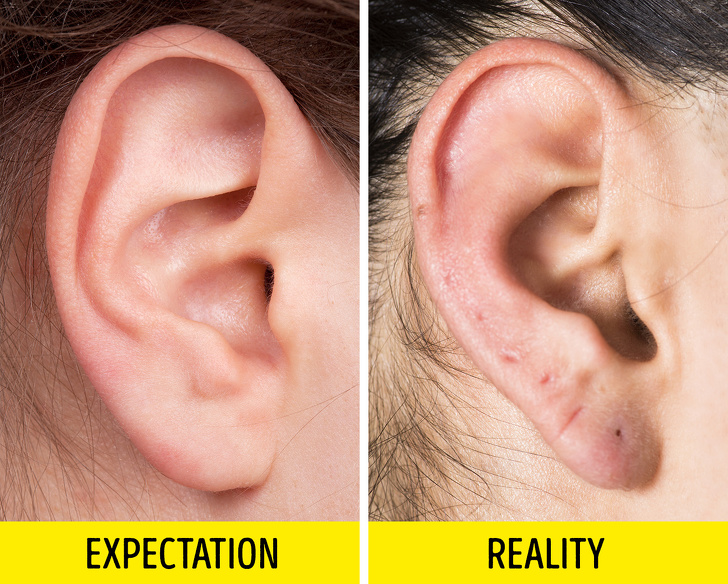
© Depositphotos
This is another popular myth. Different people have different healing abilities.
- Some people might take out a ring from their belly button and by the start of the next summer, they will have to make a new hole. However, others might have holes that last for the next 3 years.
- If you want to get rid of a piercing, use restoring ointments. But be warned, they don’t always help. Sometimes, people have to see surgeons and have stitches made.
8. Piercing is for teenagers.
For many people, the world of piercing is still associated with teenage boys and girls.
- There are some professional areas where people with piercings have a hard time finding a job. It may not be because the management of these companies is conservative, it’s just that clients are usually older people who have stereotypes about piercing.
- However, there was an interesting study conducted in 2014 where 194 college students and 95 working adults were asked to say something about a given job candidate. Half of the participants were given a CV of a candidate without piercings on the face and the other half got a person with piercings on their lips and eyebrows. The candidates with piercings got a lower rating on professional skills, communication skills, and moral qualities. But what’s even more interesting is that the younger participants in the study were harsher about the people with piercings than the older ones were.
9. People with punctured tongues have a lisp.
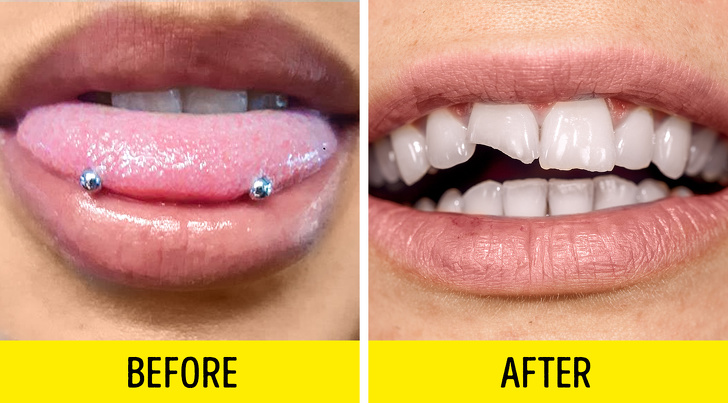
© Depositphotos
- Of course, right after a piercing procedure, it’s impossible to avoid some discomfort: it will take a little time to get used to a foreign object in your mouth. But don’t worry that it will be a constant problem. Studies show that there is no significant difference in articulation skills between the people who have piercings in their tongues and the people who don’t.
- The biggest danger of this kind of piercing is damaging the teeth. If they’re prone to getting destroyed, then it’s better not to get it. The wound on the tongue can get infected. Even if your teeth are strong, it’s important not to get in the habit of touching them with the jewelry. Also, dentists recommend removing the jewelry from the tongue during the nighttime.
- Some experts don’t do horizontal piercing of the tongue tip that is referred to as “snake eyes.” According to them, this might lead to articulation problems because a lot of muscles are tampered with here and it can even cause tooth damage.
10. Belly button piercings can be worn during pregnancy.
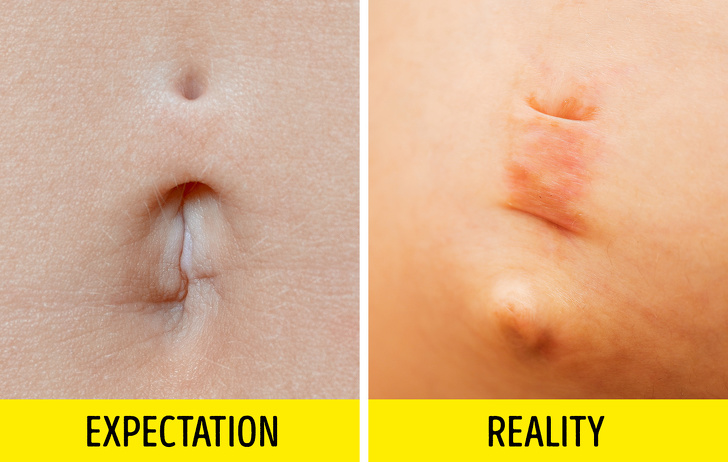
© Depositphotos
It all depends on how the belly button feels and looks.
- You can keep the jewelry in if it doesn’t cause you any discomfort. It’s better not to use metal jewelry but something made of polymers can be okay. This kind of jewelry will adapt to the changes in the body. But be careful about the materials you use.
- If the skin tension is high, it’s better to remove even the smallest pieces of jewelry.
11. Nipple piercings are not a problem for breastfeeding.
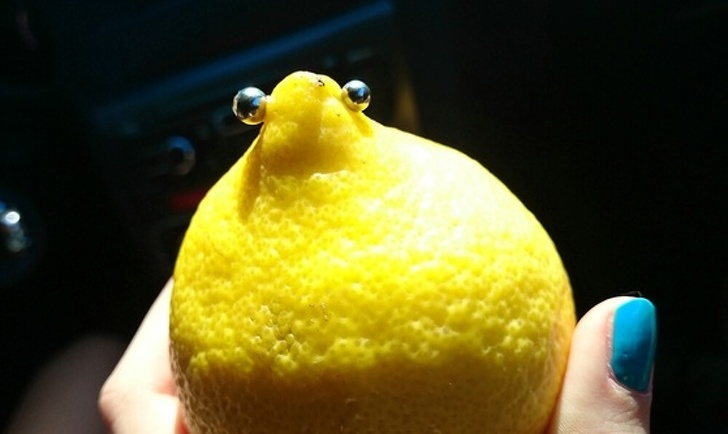
On the one hand, a lot of women with piercings in their breasts feed their babies just fine, but on the other hand, there are certain risks and things you need to know about.
- Piercings in the nipples can cause nerve damage. This might lead to problems with milk excretion.
- Experts prohibit women from getting pierced during pregnancy and breastfeeding. The hormone changes that occur in the body during these periods are not the best for piercing — the sensitivity of the nipples is high, and the irritation might cause premature labor at any time. And if you need medication in case of any complications, the range of possible medications will be very small.
- Don’t get any piercings if you’re planning to get pregnant soon. The healing process takes anywhere from 6 to 12 months. And the more time there is between the moment of piercing and the birth of the child, the lower the risks.
- Also, it’s better not to get pierced right after the baby stops drinking your milk. Wait for 3-4 months for the hormone levels to go back to normal, to what it was like before pregnancy.
- If you had piercings long before the labor and the wound is healed, experts recommend that women remove all the jewelry during the breastfeeding period in order not to cause any trouble. However, some mothers prefer removing them only for actual breastfeeding sessions. In this case, make sure that your hands and your jewelry are clean in order to prevent any nipple infections that can also hurt the baby.
- Experts say that the holes in the nipples often lead to more milk excretion. Experts are not sure whether it’s a bad or a good thing. But either way, it’s better to see a consultant about breastfeeding. They advise you to be in the best position for breastfeeding so that the baby doesn’t get too much at one time.
12. The sooner you get pierced, the better.
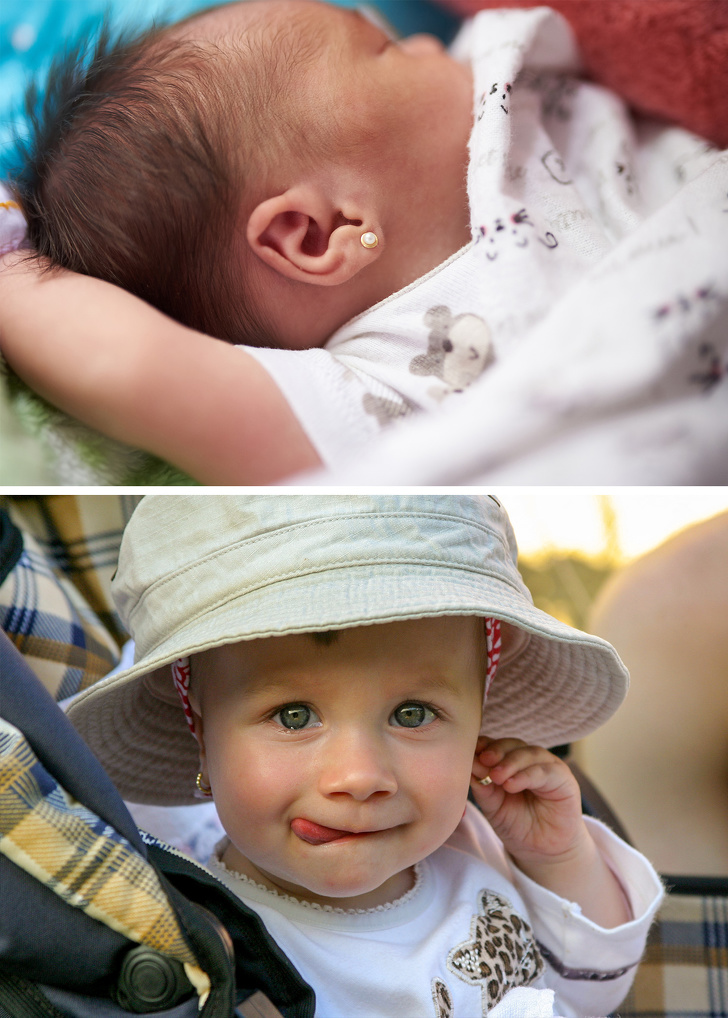
© Depositphotos
Whether to pierce children’s ears or not is a question that only the parents themselves can answer. Some people think that it’s better to do the piercing while you’re still a baby in order to prevent the child from remembering the unpleasant procedure. And some people think that it’s something that only an older child can decide.
Here are the things you have to keep in mind no matter what you believe:
- First of all, you have to understand that it’s quite hard to explain to a child that pulling, turning and touching the earrings is not a good idea. They might harm themselves accidentally, especially with bigger earrings. If they pull them, they might even tear the earlobe. It takes a very long time to heal.
- Secondly, don’t forget that such small objects can easily end up in a child’s mouth or nose. This might lead to some dire consequences.
- Finally, think about the likelihood of an uneven puncture. It’s hard, even for an adult, not to flinch during a piercing procedure, let alone a child. In the end, the hole might appear in the wrong spot. Also, the body is growing very actively at this time and there’s a risk that even a perfect hole will dislocate and the child will have to change it when they grow up or deal with asymmetric earrings.
Bonus: You have quite a lot of interesting options if you don’t want to stop at ear piercing.
What body parts do you think look best with piercings? And where would you never get pierced? Tell us in the comment section below.
Preview photo credit Depositphotos








